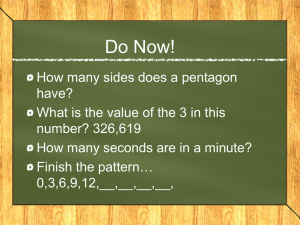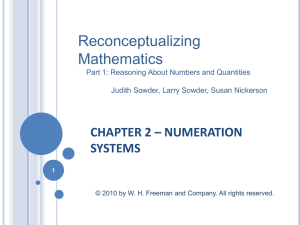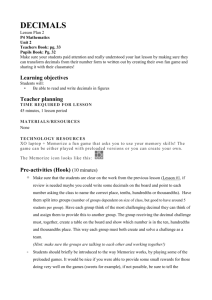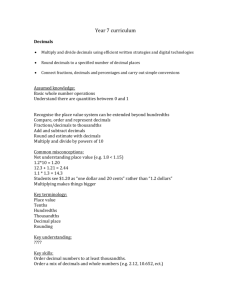5NBTA3A Unpacked
advertisement
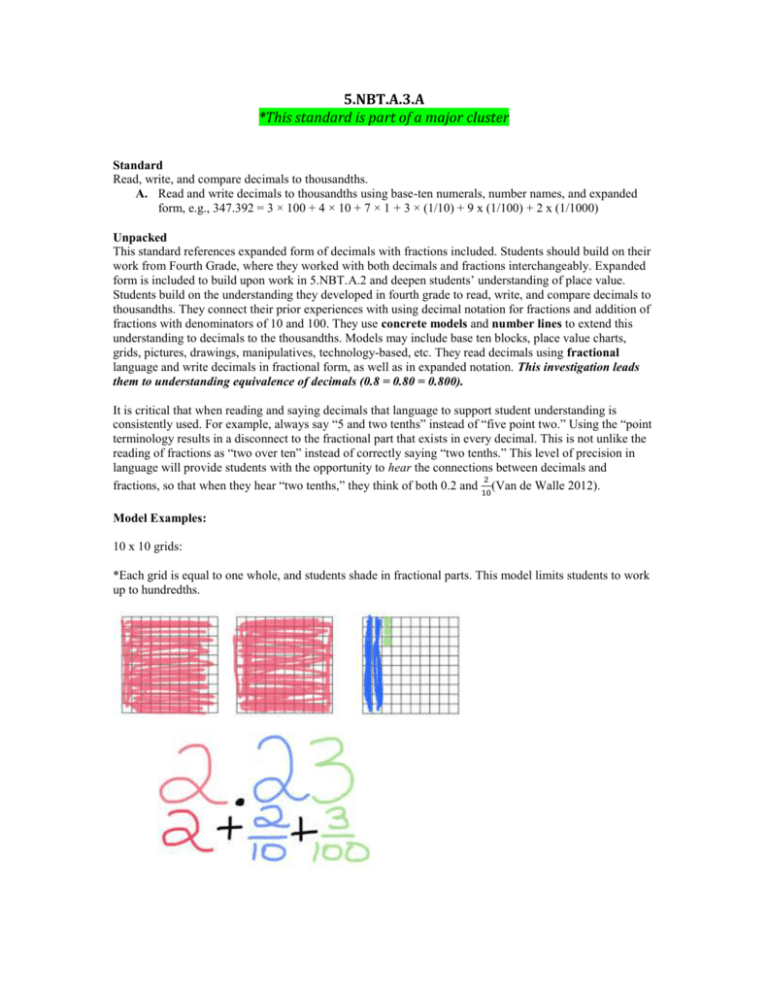
5.NBT.A.3.A *This standard is part of a major cluster Standard Read, write, and compare decimals to thousandths. A. Read and write decimals to thousandths using base-ten numerals, number names, and expanded form, e.g., 347.392 = 3 × 100 + 4 × 10 + 7 × 1 + 3 × (1/10) + 9 x (1/100) + 2 x (1/1000) Unpacked This standard references expanded form of decimals with fractions included. Students should build on their work from Fourth Grade, where they worked with both decimals and fractions interchangeably. Expanded form is included to build upon work in 5.NBT.A.2 and deepen students’ understanding of place value. Students build on the understanding they developed in fourth grade to read, write, and compare decimals to thousandths. They connect their prior experiences with using decimal notation for fractions and addition of fractions with denominators of 10 and 100. They use concrete models and number lines to extend this understanding to decimals to the thousandths. Models may include base ten blocks, place value charts, grids, pictures, drawings, manipulatives, technology-based, etc. They read decimals using fractional language and write decimals in fractional form, as well as in expanded notation. This investigation leads them to understanding equivalence of decimals (0.8 = 0.80 = 0.800). It is critical that when reading and saying decimals that language to support student understanding is consistently used. For example, always say “5 and two tenths” instead of “five point two.” Using the “point terminology results in a disconnect to the fractional part that exists in every decimal. This is not unlike the reading of fractions as “two over ten” instead of correctly saying “two tenths.” This level of precision in language will provide students with the opportunity to hear the connections between decimals and 2 fractions, so that when they hear “two tenths,” they think of both 0.2 and (Van de Walle 2012). 10 Model Examples: 10 x 10 grids: *Each grid is equal to one whole, and students shade in fractional parts. This model limits students to work up to hundredths. Technology based base 10 blocks: Meter Stick: * One of the best length models for a decimal fraction is a meter stick. Each decimeter is one-tenth of the whole stick, each centimeter is one-hundredth, and each millimeter is one-thousandth. Empty Number Lines: Empty number lines are also useful in helping students compare decimals and think about scale and place value (Martinie & Bay Williams, 2003). Given two or more decimals, students can use an empty number line to position the values, revealing what they know about the size of these decimals using zero, one, other whole numbers, or other decimal values as benchmarks. The use of multiple representations will broaden not only students’ understanding but the teachers’ understanding of their level of performance (Van de Walle, 2013). * The above samples are merely examples of various ways students might model, and in no way represent the only ways to model this standard. The following are potential questions to check for understanding: Have students show a fraction using any model. For example, once a fraction, say 65 , is modeled, the following ideas can be explored: 100 Is this fraction more or less that 1/2 ? Than 2/3? Than ¼? Some familiarity can be developed by comparison with fractions that are easy to think about. What are some different ways to say this fraction using tenths and hundredths? (6 tenths and 5 hundredths or 65 hundredths) Include thousandths when appropriate. Show two ways to write this fraction…… Using expanded form, explain why 3.14 is larger than 3.014? Model your thinking. What is a number less than 0.245? Use expanded form to justify and explain your answer. Consider the following: .538 is written in expanded form notated as; 5 x (1/10) + 3 x (1/100) + 8 x (1/ 1,000) Model and explain the relationship between the standard form and expanded form values of each digit. For example; how does the digit 5 in .538 relate to 5 x 1/10? Show the number 1.34 in expanded form in multiple ways. Use a model to prove that your answers are correct. (models can be done with base ten blocks, place value charts, number lines, drawings, manipulatives, technology-based, etc.

